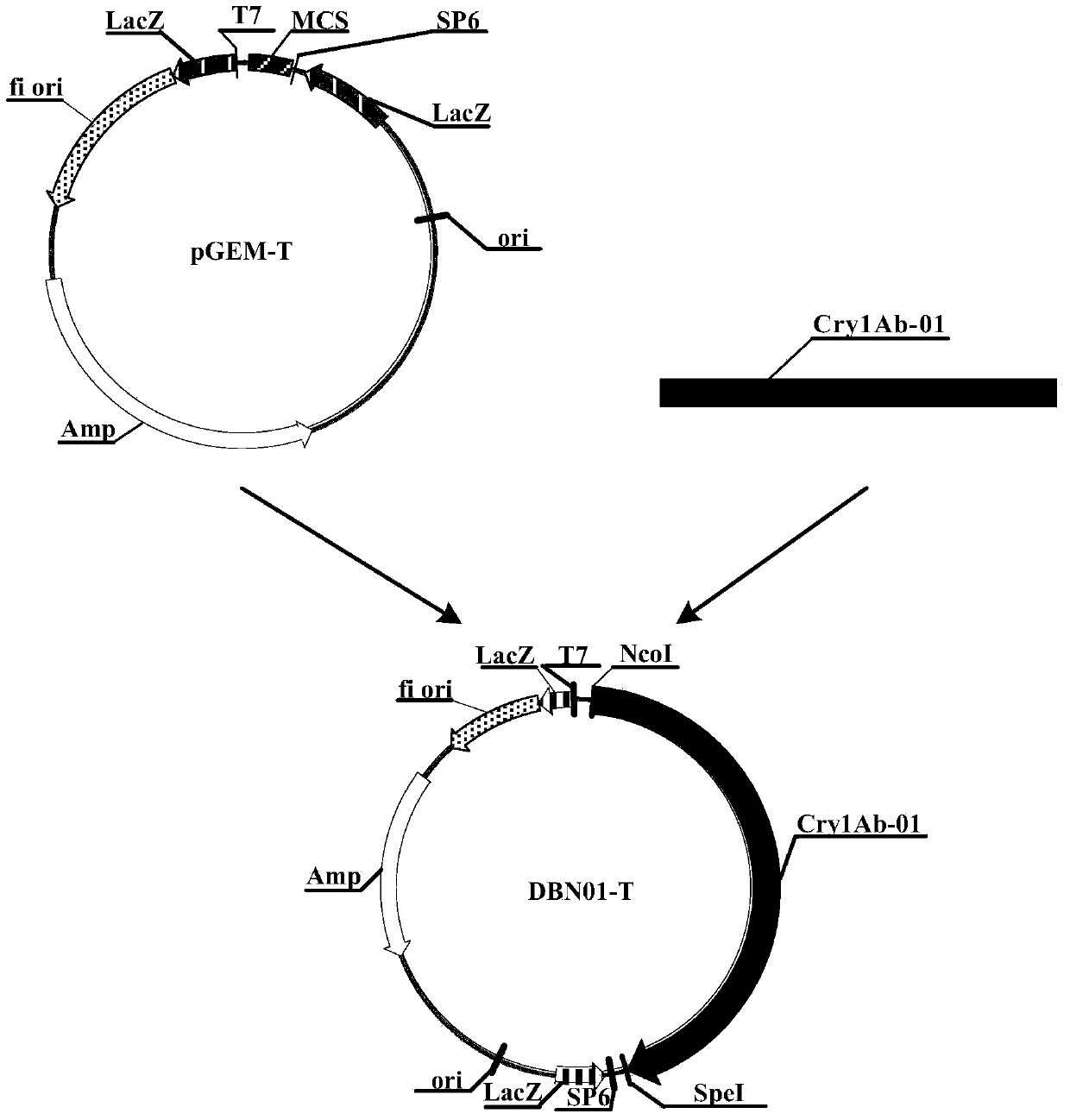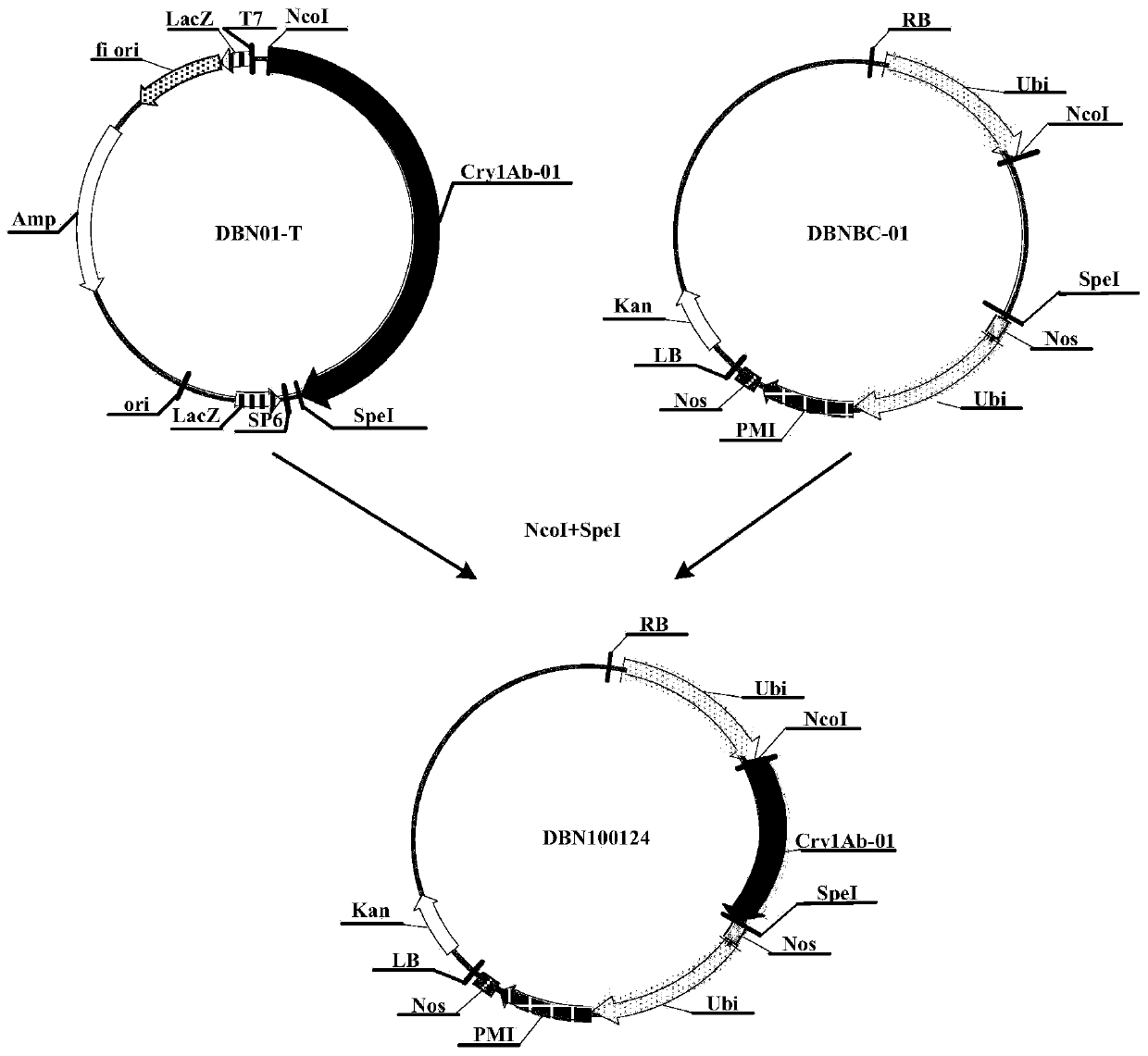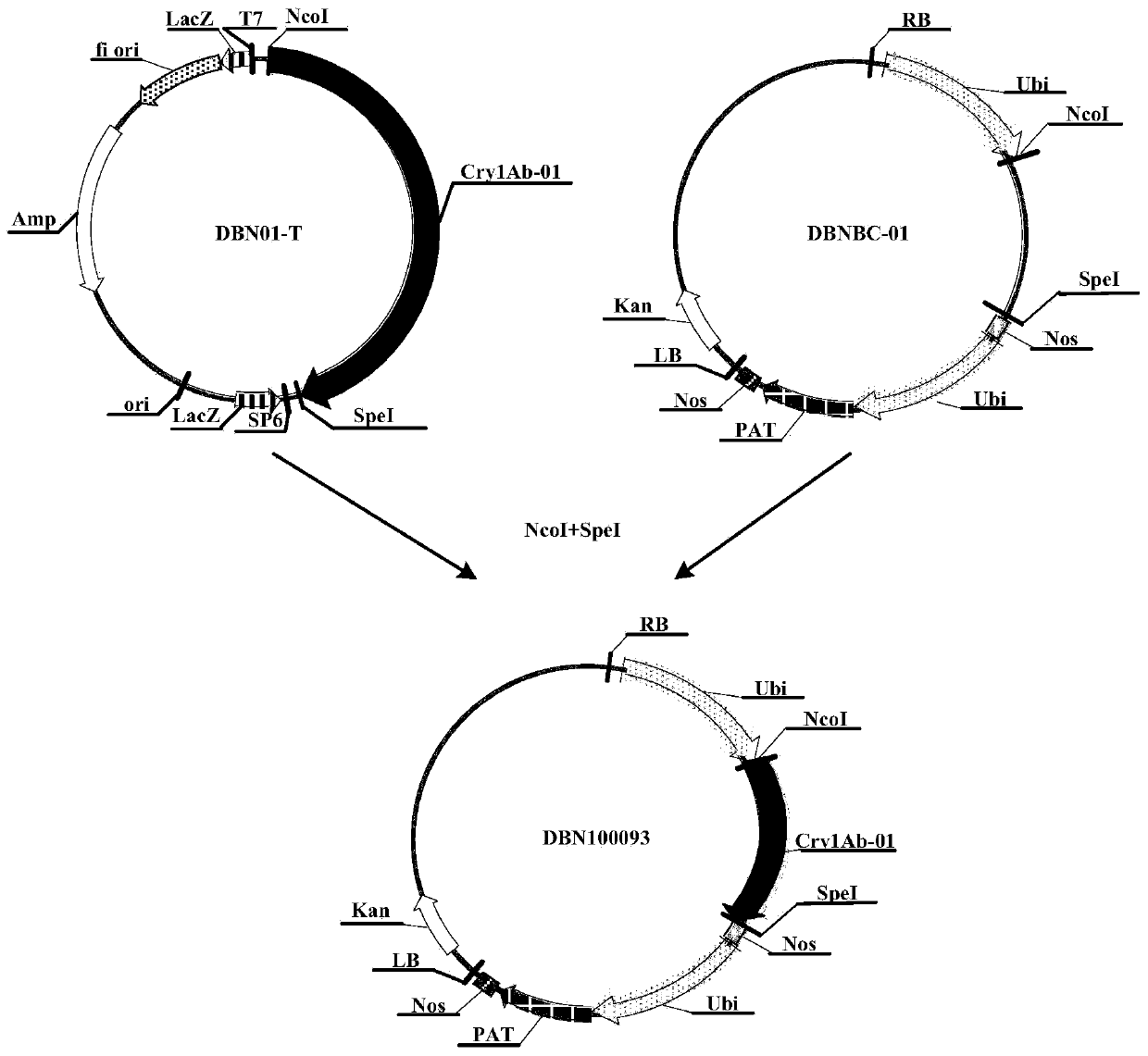Method for controlling injurious insects
A technology for pests and Spodoptera litura, applied in the direction of botany equipment and methods, biochemical equipment and methods, insecticides, etc.
- Summary
- Abstract
- Description
- Claims
- Application Information
AI Technical Summary
Problems solved by technology
Method used
Image
Examples
no. 1 example
[0092] The first embodiment, the acquisition and synthesis of Cry1A gene
[0093] 1. Obtain the Cry1A nucleotide sequence
[0094] The amino acid sequence (818 amino acids) of the Cry1Ab-01 insecticidal protein, as shown in SEQ ID NO: 1 in the sequence listing; Cry1Ab-01 encoding the amino acid sequence (818 amino acids) corresponding to the Cry1Ab-01 insecticidal protein Nucleotide sequence (2457 nucleotides), as shown in SEQ ID NO:4 in the sequence listing. The amino acid sequence (615 amino acids) of the Cry1Ab-02 insecticidal protein, as shown in SEQ ID NO: 2 in the sequence listing; Cry1Ab-02 encoding the amino acid sequence (615 amino acids) corresponding to the Cry1Ab-02 insecticidal protein Nucleotide sequence (1848 nucleotides), as shown in SEQ ID NO:5 in the sequence listing.
[0095] The amino acid sequence (609 amino acids) of the Cry1Ab / Ac insecticidal protein, as shown in SEQ ID NO:28 in the sequence listing; Cry1Ab / Ac encoding the amino acid sequence (609 amin...
no. 2 example
[0103] The second embodiment, construction of recombinant expression vector and transformation of recombinant expression vector into Agrobacterium
[0104] 1. Construction of a recombinant cloning vector containing the Cry1A gene
[0105] The synthesized Cry1Ab-01 nucleotide sequence was connected to the cloning vector pGEM-T (Promega, Madison, USA, CAT: A3600), and the operation steps were carried out according to the instructions of the pGEM-T vector produced by Promega Company to obtain the recombinant cloning vector DBN01-T , its construction process is as follows figure 1 Shown (wherein, Amp represents the ampicillin resistance gene; f1 represents the replication origin of phage f1; LacZ is the LacZ start codon; SP6 is the promoter of SP6 RNA polymerase; T7 is the promoter of T7 RNA polymerase; Cry1Ab-01 is the promoter of Cry1Ab -01 nucleotide sequence (SEQ ID NO: 4); MCS is a multiple cloning site).
[0106]Then, the recombinant cloning vector DBN01-T was transformed ...
no. 3 example
[0129] The third embodiment, the acquisition and verification of corn plants transferred to the Cry1A gene
[0130] 1. Obtaining corn plants transferred to the Cry1A gene
[0131] According to the commonly used Agrobacterium infection method, the immature embryos of the aseptically cultured maize variety Zong 31 (Z31) were co-cultured with the Agrobacterium described in 3 in the second example, so that the T-DNA in recombinant expression vectors DBN100124, DBN100053, DBN100056, DBN100003, DBN100029 and DBN100076 (including the promoter sequence of corn Ubiquitin gene, Cry1Ab-01 nucleotide sequence, Cry1Ab-02 nucleotide sequence, Cry1Ab / Ac nucleoside Acid sequence, Cry1A.105 nucleotide sequence, Vip3Aa nucleotide sequence, Cry2Ab nucleotide sequence, PMI gene and Nos terminator sequence) were transferred into the maize genome, and the transferred Cry1Ab-01 nucleotide sequence was obtained Corn plants transferred to Cry1Ab-02 nucleotide sequence, corn plants transferred to Cry1...
PUM
 Login to View More
Login to View More Abstract
Description
Claims
Application Information
 Login to View More
Login to View More - R&D
- Intellectual Property
- Life Sciences
- Materials
- Tech Scout
- Unparalleled Data Quality
- Higher Quality Content
- 60% Fewer Hallucinations
Browse by: Latest US Patents, China's latest patents, Technical Efficacy Thesaurus, Application Domain, Technology Topic, Popular Technical Reports.
© 2025 PatSnap. All rights reserved.Legal|Privacy policy|Modern Slavery Act Transparency Statement|Sitemap|About US| Contact US: help@patsnap.com



